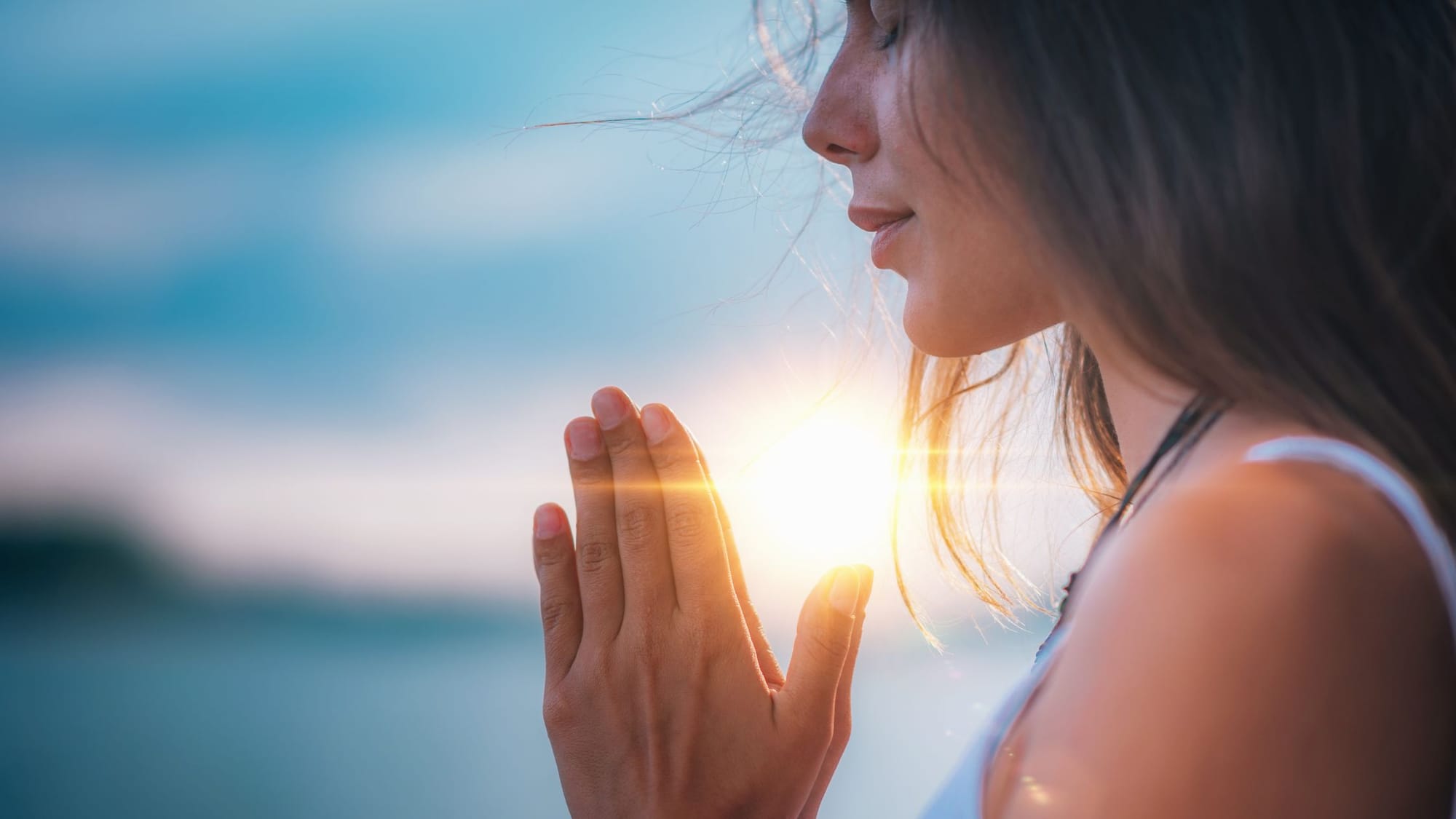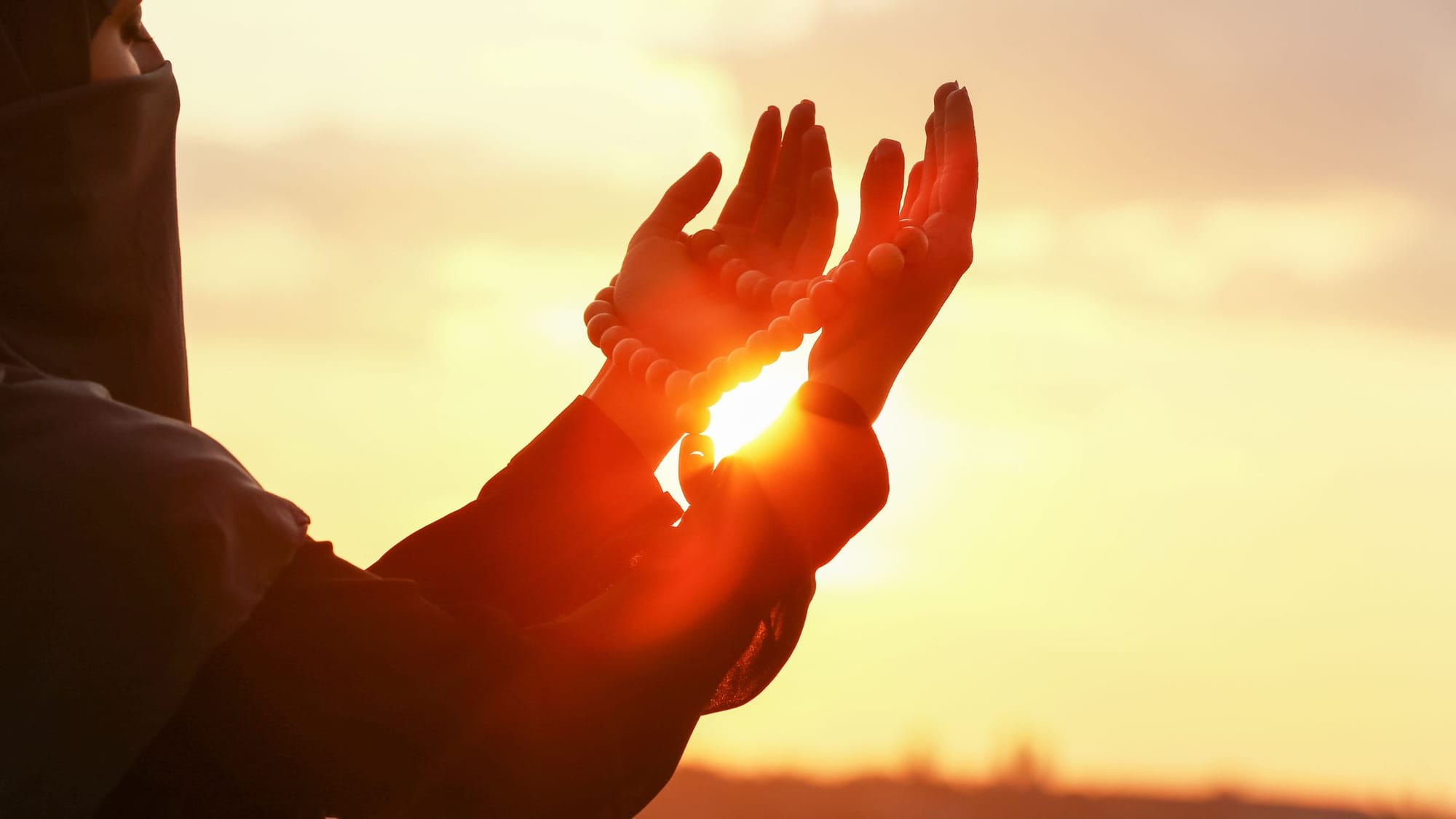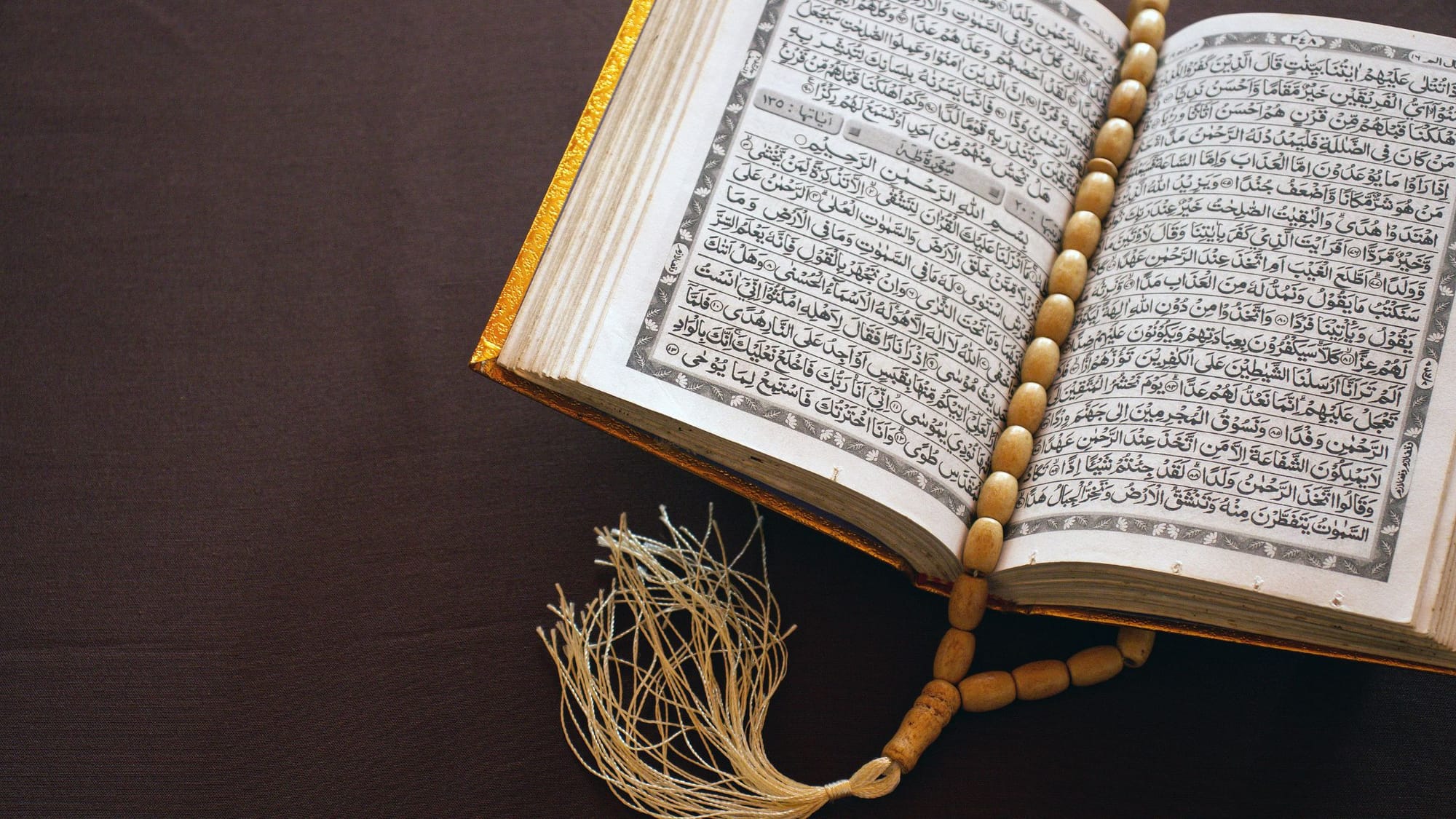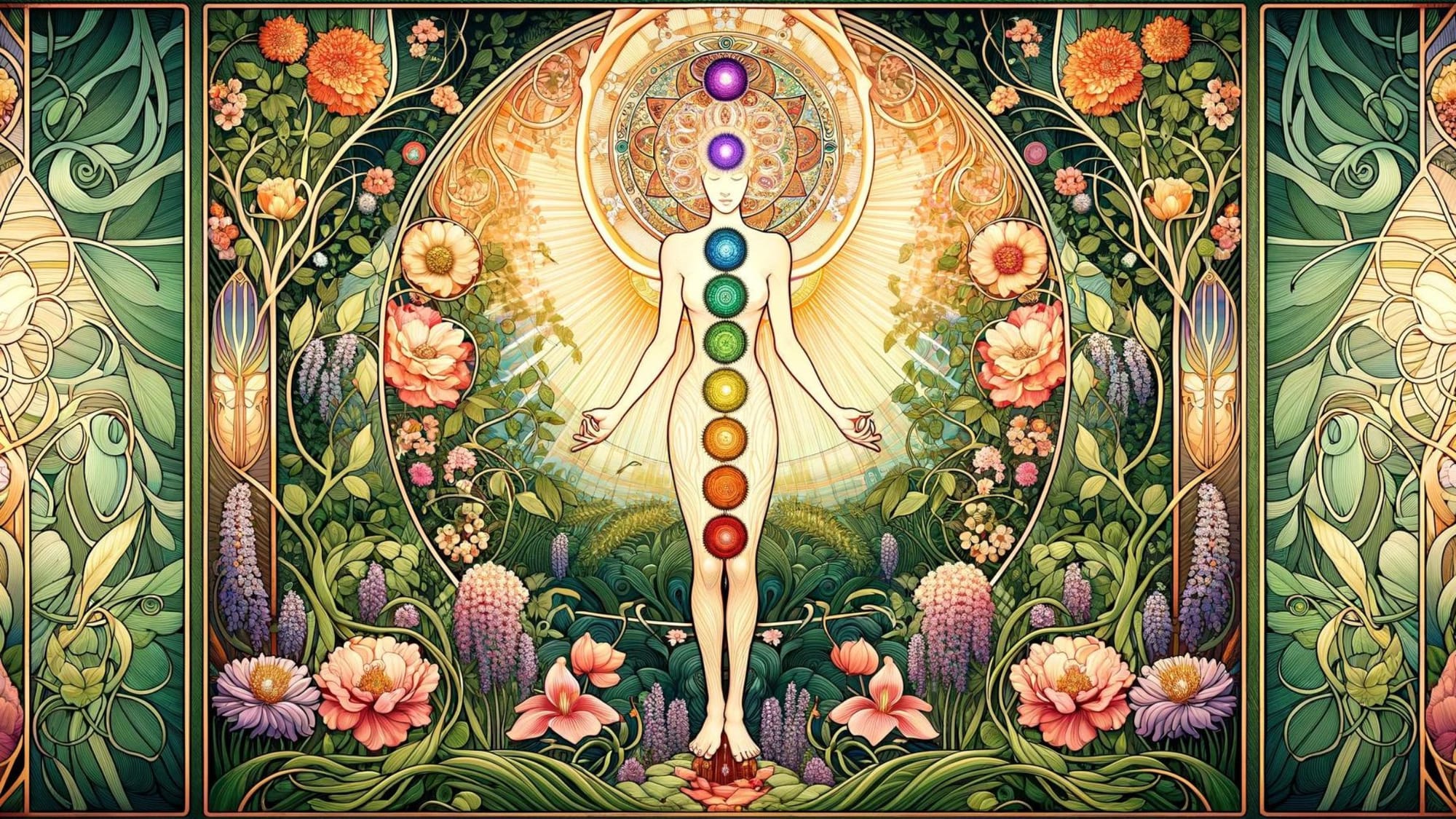Prayer Guide For Modern Women To Connect With The Divine

Prayer is a powerful tool that allows people to connect with something greater than themselves—whether that’s God, the universe, or their inner self. It offers not only spiritual connection but also emotional and mental benefits, helping to reduce stress, find clarity, and promote a sense of peace. Despite its many benefits, traditional forms of prayer can sometimes feel out of touch with our modern lives, leaving some women feeling disconnected or uninspired.
This guide is here to show you that prayer can be flexible, personal, and deeply empowering. Whether you've prayed all your life or are just beginning, you’ll discover that prayer can be adapted to fit your beliefs, lifestyle, and needs.
It’s about finding a practice that feels authentic to you, no matter your background or spiritual journey. Let’s explore how prayer can become a meaningful and transformative part of your life as a modern woman.
Table of Content
1. How Is Prayer Universal?

Prayer is a universal practice, but it looks different across various cultures and traditions. Each offers its own unique way to connect with the divine or seek inner peace.
Here’s a look at how different traditions approach prayer:
1. Muslim: Prayer is very structured in Islam, with specific postures and prayers (called Salat) that are performed at set times of the day. However, Muslims also have personal prayers (du’a) where they can speak directly to God about their personal needs or feelings.
2. Christian: Christian prayer can range from formal prayers recited in church, like the Lord’s Prayer, to informal, personal conversations with God. It can be done privately or in a community, with some focusing on gratitude, forgiveness, or guidance.
3. Buddhist: In Buddhism, prayer often takes the form of meditation or chanting, focusing on mindfulness, compassion, and inner peace. Physical movements, like prostrations (bowing down), are also part of the practice, helping to bring the body and mind into alignment.
4. Hindu: Prayer in Hinduism is very flexible and personal. It may involve chanting mantras (sacred sounds or phrases), making offerings to deities, or meditating. Each person can tailor their prayer practice based on what feels most meaningful to them.
Even though prayer practices vary across different cultures and traditions, many share common elements that reflect universal spiritual themes.
Common Gestures In Prayer
Across many traditions, physical gestures such as bowing or kneeling are common acts of humility and reverence. These movements symbolize respect and submission to a higher power or spiritual force. For example:
- In Islam, bowing and prostration during Salat (formal prayer) are key components, of showing devotion and humility before God.
- In Christianity, kneeling is often seen during prayers in churches, signifying respect and submission.
- In Buddhism, prostrations are made as a sign of reverence to the Buddha and teachings, connecting the body with the spiritual act of mindfulness.
Significance Of Prayer Times In Islam
In Islam, prayer times are deeply connected to natural rhythms and energy changes throughout the day.
In Islam, the five daily prayers (Salat) are performed at specific times that correspond to different phases of the day, such as dawn, noon, and sunset. These times are believed to align with shifts in energy and encourage a consistent spiritual connection throughout the day.
The dawn prayer (Fajr) is seen as particularly powerful, symbolizing new beginnings and clarity, while the twilight prayer (Maghrib) reflects the winding down of the day and a time for reflection.
Read Also:

2. Why Do We Pray?
Prayer serves different purposes for different people, but at its core, it’s a powerful tool for inner growth and connection.
Here are some key reasons why people choose to pray:
Spiritual Connection: For many, prayer is a way to connect with a higher power—whether that’s God, the universe, or their inner self. It creates a moment of stillness and reflection, offering clarity, guidance, and a sense of peace. Prayer helps foster a deeper spiritual relationship and reminds us that we’re part of something bigger than ourselves.
Emotional and Mental Relief: Prayer can also be a way to manage stress, anxiety, and overwhelming emotions. It provides a safe space to release worries and seek comfort. Many people find that regularly praying or meditating helps them stay grounded, calm, and more focused in their daily lives.
Affirmation and Gratitude: Prayer isn’t just about asking for help; it can also be a tool for manifesting positive outcomes. By affirming our desires and expressing gratitude for what we already have, we shift our mindset to focus on abundance and possibility. Gratitude prayers, in particular, help us cultivate appreciation for life’s blessings, no matter how big or small.
These reasons highlight how prayer can be a personal and transformative practice, offering both spiritual and practical benefits in everyday life.
Read Also:

3. Who Do We Pray To?
The beauty of prayer is that it can be directed to whatever source of strength, guidance, or inspiration resonates most with the individual. Here are some common focuses for prayer:
The Divine: For many, prayer is a way to connect with a higher power, whether that’s God, Goddess, or the Universe. Different cultures and beliefs shape how people view this divine presence, but the goal is often the same—seeking wisdom, guidance, or comfort from something beyond ourselves.
Spiritual Ancestors or Guides: Some people choose to direct their prayers toward spiritual ancestors or guides. This can include loved ones who have passed on, figures from one’s heritage, or spiritual beings believed to offer protection and wisdom. Calling upon these guides can make prayer feel more personal and grounded in one’s lineage or spiritual journey.
Inner Self: For others, prayer is a way to connect with their own higher self. This form of prayer is about looking inward, reflecting on one’s own potential for growth, wisdom, and clarity. By communicating with the inner self, individuals can foster a deeper sense of self-awareness and inner strength.
4. What To Pray For?

Prayer is highly personal, and what you pray for can vary depending on your needs, desires, or what’s happening in your life. Here are a few common things people pray for:
Intentions and Desires: Many people use prayer as a way to set intentions for their lives. This could be asking for guidance, strength, or healing during difficult times. Others may pray for clarity about a decision, for support in achieving personal goals, or simply for the courage to face challenges. Prayer can help clarify what’s important and align your actions with your intentions.
Gratitude: Prayer is also a powerful tool for expressing gratitude. It allows us to take a moment to reflect on and appreciate the blessings in our lives, whether they are big accomplishments or small everyday joys. Gratitude prayers shift focus away from what we lack to what we already have, fostering a sense of abundance and contentment.
Affirmations: Another powerful way to use prayer is through affirmations. By speaking about your desires as if they are already coming true—using the present tense—you can create a positive mindset and increase your belief in those outcomes. Affirmation prayers can be a way to manifest your goals, reinforcing hope and confidence.
Read Also:

5. When To Pray?
The timing of prayer can be as structured or spontaneous as you’d like. Here are some common approaches to when people choose to pray:
Daily Rituals: Many people find it helpful to incorporate prayer into their daily routines. Praying in the morning can set the tone for the day, filling you with intention, while evening prayers provide a chance to reflect on the day’s events and offer gratitude or seek peace before resting. Creating a regular prayer routine helps keep you grounded and aligned with your spiritual goals.
Spontaneously: Prayer doesn’t have to follow a set schedule. You can pray anytime you feel the need, whether during a moment of joy, fear, uncertainty or simply when you feel called to connect. Spontaneous, freestyle prayer allows you to speak directly from the heart, making it adaptable and personal for busy lives.
Culturally Prescribed Times: In some traditions, prayer is tied to specific times of the day, creating a rhythm for spiritual alignment. For example, in Islam, the five daily prayers (Salat) are performed at set times to reflect different moments of the day—dawn, noon, afternoon, sunset, and night. These set prayers offer structure and help maintain a regular connection with the divine.
Set Prayers vs. Freestyle: Some prefer the familiarity and spiritual depth of set prayers, like Salat in Islam or the Lord’s Prayer in Christianity, which provide a well-defined framework. Others find freestyle prayer more flexible and expressive, allowing them to speak directly to the divine in their own words. Both approaches have value, and you can incorporate both into your practice depending on the situation and your personal preference.
Read Also:

6. Where To Pray?
Prayer can happen anywhere that feels right to you, whether it’s a dedicated space or wherever you happen to be in the moment. Here are a few ideas for where you can pray:
Sacred Spaces: Creating a sacred space in your home can help you focus and get into a spiritual mindset. This could be a small altar with candles, crystals, or other meaningful objects, or simply a quiet corner where you feel peaceful. You might also find that being in a temple, church, or other designated spiritual place enhances your connection during prayer.
On the Go: Prayer doesn’t need to be confined to a specific location. You can pray wherever you are—while commuting, walking, or even sitting in a quiet park. These moments of connection can bring peace and clarity, no matter your surroundings. Prayer on the go can fit easily into a busy schedule, reminding you that spirituality is always accessible.
Nature: Praying in nature can be especially powerful, helping you feel connected to the earth and the natural world around you. Whether it's in a forest, at the beach, or simply in your backyard, nature’s beauty and serenity can enhance your spiritual practice. You can also try grounding (earthing) by praying barefoot on the ground to feel physically connected to the earth’s energy, which may bring both spiritual and physical benefits.
Across various traditions, nature is often seen as a sacred space for prayer and meditation. The tranquility of natural surroundings—whether it's a mountain, forest, or desert—offers an ideal setting to connect with the divine and engage in deep reflection. For example:
- Prophet Muhammad (PBUH): He would retreat to Mount Hira to meditate and pray in solitude, emphasizing the connection between nature and spirituality in Islam.
- Jesus Christ: Jesus often prayed in nature, such as in the wilderness or the Garden of Gethsemane, seeking solitude and reflection.
- Buddha: The Buddha attained enlightenment while meditating under the Bodhi tree, highlighting the role of nature in spiritual awakening.
- Hindu Sages: Many Hindu saints meditate and pray in sacred natural spaces like forests, rivers, and the Himalayas, seeking spiritual insight.
7. How To Pray?

Prayer can be as formal or as personal as you’d like, and there’s no single "right" way to do it. Here are some common methods and modern approaches to help you find what feels best for you:
Traditional Practices: Many spiritual traditions have established methods for prayer that include physical postures like bowing, kneeling, or lighting incense. These rituals help create a sense of reverence and focus.
For example, in Islam, there are specific postures and prayers to follow during Salat. Additionally, Muslim women are encouraged to dress modestly during prayer, covering their hair and ensuring that their navel and crown chakra are covered. This is believed to prevent the leakage of spiritual energy, allowing for a deeper and more focused connection during prayer.
In Hinduism, lighting incense or offering flowers may accompany prayers. These practices provide structure and help foster a connection to long-standing spiritual traditions.
Personal Adaptations: If traditional methods don’t fully resonate with you, try combining elements from different practices or creating your own. You could chant, sing, or simply speak your prayers out loud or silently in your mind. Some might enjoy adding journaling or writing down their prayers as part of the process. Personalizing your prayer routine makes it more meaningful and aligns it with your unique needs and personality.
Modern Approaches: Many modern women choose to adapt prayer language and methods to suit their beliefs. This might mean addressing God as "Goddess," "Universe," or "Divine" to reflect non-patriarchal values, or incorporating elements like breathwork, visualization, or affirmations into your practice. Using positive affirmations in prayer—such as speaking about your desires as if they are already happening—can be an empowering way to pray.
8. Sacred Prayers: Fatiha and the Lord’s Prayer
Prayer is a deeply rooted practice in many religious traditions, with set prayers that offer structure and a connection to centuries of spiritual practice. Two such profound examples are the Fatiha in Islam and the Lord's Prayer in Christianity, both of which carry similar themes of guidance, forgiveness, and reliance on divine support.
- The Fatiha (Islam):
Recited in every unit of Muslim prayer, the Fatiha begins with praise for God, acknowledging His mercy and compassion. It asks for guidance on the straight path, seeking God's protection from going astray and relying on His wisdom and forgiveness. - The Lord's Prayer (Christianity):
The Lord's Prayer, central to Christian worship, also calls upon God for guidance and provision. It emphasizes daily needs ("Give us this day our daily bread") and asks for forgiveness while encouraging the forgiveness of others. The prayer seeks protection from temptation and evil, asking for divine support and moral strength.
Both prayers reflect themes of seeking divine guidance, forgiveness, and provision, highlighting the universal human desire for spiritual direction and support. By comparing these sacred prayers, we can see how different traditions share similar foundations of faith and humility.
Read Also:

9. Quran Verses About Praying

Surah Al-Baqarah (2:186):
"And when My servants ask you concerning Me, indeed I am near. I respond to the invocation of the supplicant when he calls upon Me."
This verse emphasizes that God is always close and responsive to those who pray, encouraging believers to turn to Him for guidance and help.
Surah Al-Mu’minun (23:1-2):
"Certainly will the believers have succeeded: They who are during their prayer humbly submissive."
Here, the Quran highlights the importance of humility in prayer, suggesting that true success comes from sincere devotion during prayer.
Surah An-Nisa (4:103):
"Indeed, prayer has been decreed upon the believers a decree of specified times."
This verse reminds Muslims of the importance of observing prayer at set times, reinforcing the spiritual discipline of daily prayer.
10. Prayer Tips For Modern Women
Creating a modern prayer practice that feels meaningful and personalized can enhance your spiritual experience. Here are some practical tips to help you get started:
- Set an Intention: Before starting, take a moment to clarify your intention—what do you seek from this prayer (e.g., guidance, peace, gratitude)?
- Start with Gratitude: Begin by expressing thanks for the blessings in your life, big or small.
- Share Your Desires or Concerns: Speak about what’s on your heart—whether it’s asking for guidance, or strength, or sharing your hopes and worries.
- End with Stillness or Meditation: After speaking, take a moment of silence to reflect or meditate, allowing space for any guidance or insights to come through.
- Set the Atmosphere: Create a peaceful and sacred environment that helps you focus. Light candles, use essential oils (such as lavender or sage), or play soft nature sounds like ocean waves or birdsong. The atmosphere can make a big difference in how connected and grounded you feel during prayer.
- Physical Posture: Incorporate movements from practices like yoga or Tai Chi to engage your body as well as your mind. You can also simply sit comfortably, with your feet on the ground or cross-legged, ensuring that your posture supports relaxation and presence. Movement, like swirling the hips or gentle stretching, can enhance your connection during prayer.
- Mindfulness and Sincerity: The most important aspect of prayer is being present and sincere. Instead of repeating memorized prayers without feeling, focus on what you’re truly asking or grateful for. Take your time to really reflect on the words or feelings you’re expressing, allowing for deeper emotional and spiritual connection.
- Objects for Connection: Using sacred objects during prayer can help you feel more connected. You might use a shawl made of natural materials, mala beads for counting prayers or mantras or grounding objects like stones or crystals. These can act as tangible reminders of your intentions and help you stay centered.
Read Also:

Final Words
Prayer is a deeply personal practice that can be adapted to fit your modern lifestyle and spiritual beliefs. Whether you follow traditional rituals or create your own unique approach, the key is to make prayer meaningful, sincere, and aligned with who you are. By incorporating elements that resonate with you—whether it’s setting a sacred space, using personalized language, or adding movement—you can cultivate a prayer practice that brings peace, clarity, and empowerment into your life.
Become a Sista and follow us on Instagram, subscribe to our YouTube channel, and tune into our podcasts on Spotify!
Frequently Asked Questions
1. How to encourage women to pray?
Encourage women to pray by emphasizing that prayer is personal and doesn’t have to follow strict rules. Let them know they can adapt prayer to fit their beliefs, using their own words and methods that make them feel comfortable. Highlight how prayer can offer peace, clarity, and strength in daily life.
2. What is a good prayer for women?
A good prayer for women is one that speaks to their hearts and aligns with their needs. It could be as simple as asking for strength, wisdom, or peace, or expressing gratitude for life's blessings. For example: "May I find strength in myself and peace in my heart as I navigate the challenges and joys of my journey."
3. Why do people pray in modern society?
People pray in modern society to find inner peace, seek guidance, manage stress, and connect with something greater than themselves. Prayer helps them feel grounded, process emotions, and express gratitude, making it a powerful tool for personal well-being.
4. What makes a woman blessed?
A woman is blessed when she feels peace, joy, and fulfillment in her life. Being surrounded by love, feeling connected to her purpose, and having gratitude for the good in her life are signs of being blessed. Blessings can come from within, not just from external circumstances.


